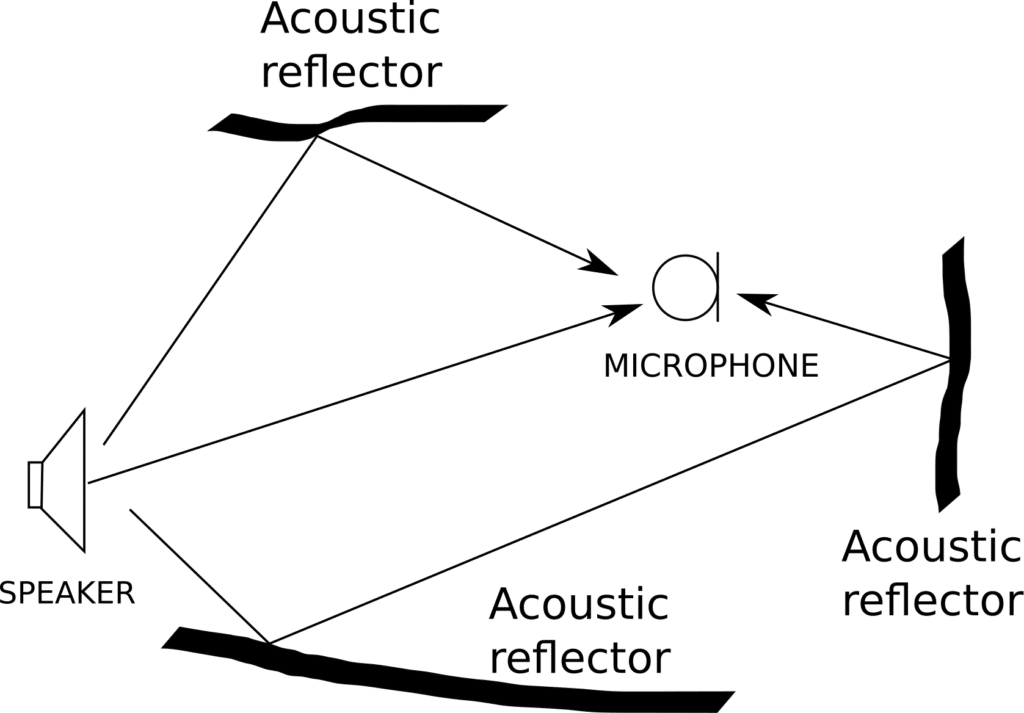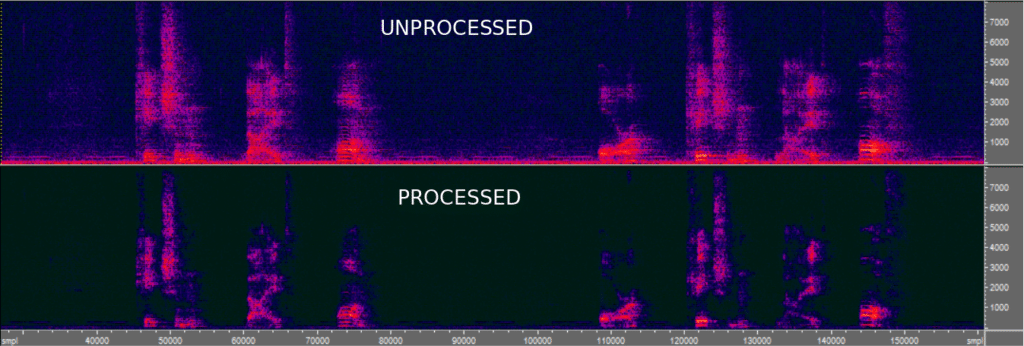Reverberation has the effect of degrading both the perception of speech on most quality metrics as well as having adverse effects on automatic speech recognition (ASR) engines. Most solutions on dereverberation utilize multiple microphones to implement spatial or adaptive beamforming to reduce the effects of multi-paths. However, there are still many systems that implement a single microphone and will need to be dereverberated to enhance the performance of the applications they are being used for.
Consider the depiction of reverberation illustrated in Figure 1 below:

Figure 1: Depiction of reverberant room
The received temporal signal at the microphone can be synthesized as:
where is the desired signal,
is noise and
is the delay component associated with component
.
corresponds to the direct path signal. The frequency domain representation then becomes:
The function of a dereverberation algorithm is to reduce as much as possible. A sample performance of VOCAL’s proprietary software is illustrated in Figure 2 below:

Figure 2: Reverberated signal on top, dereverberated signal at the bottom
VOCAL Technologies offers custom designed solutions for beamforming with a robust voice activity detector, acoustic echo cancellation and noise suppression. Our custom implementations of such systems are meant to deliver optimum performance for your specific beamforming task. Contact us today to discuss your solution!